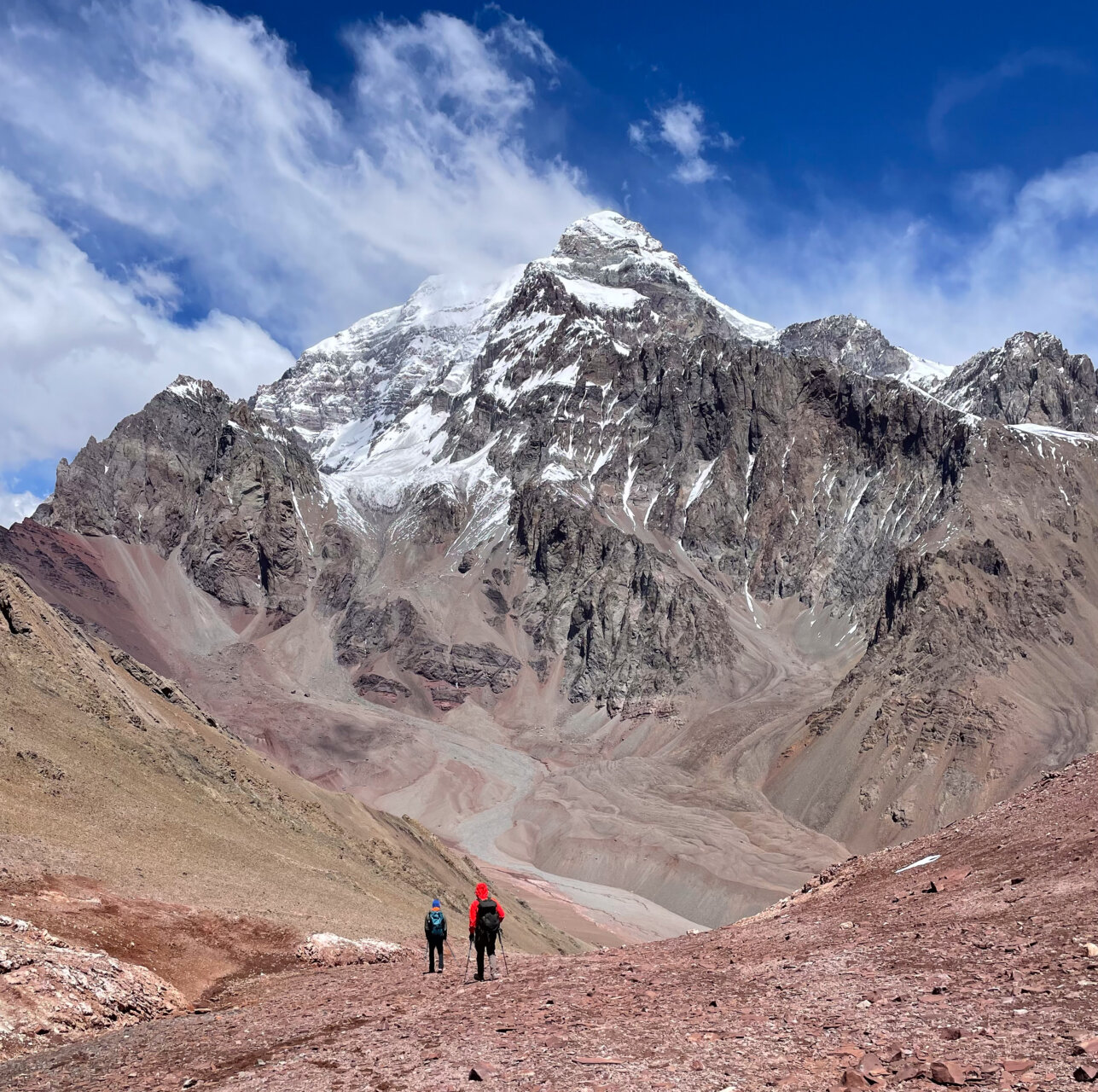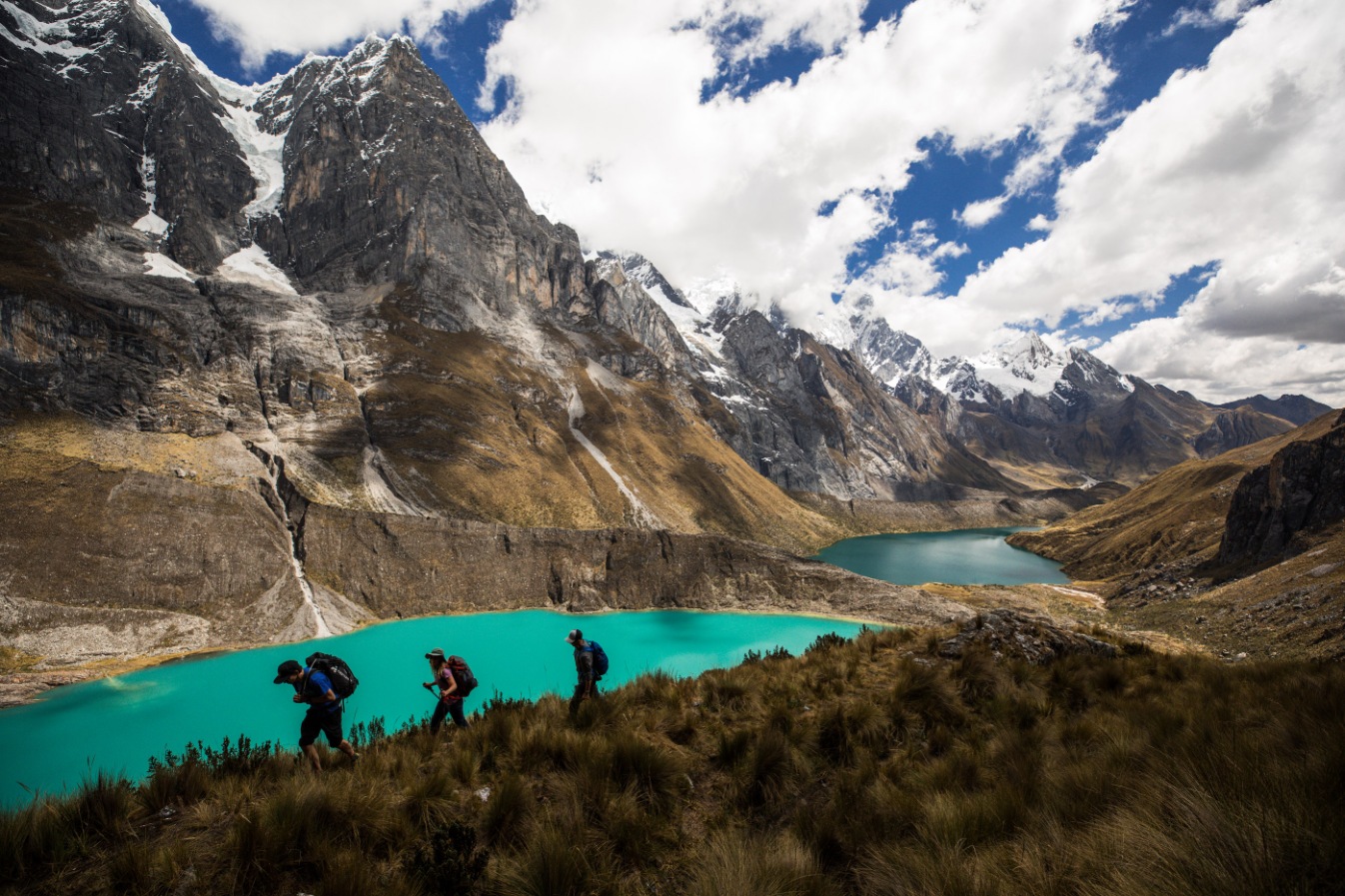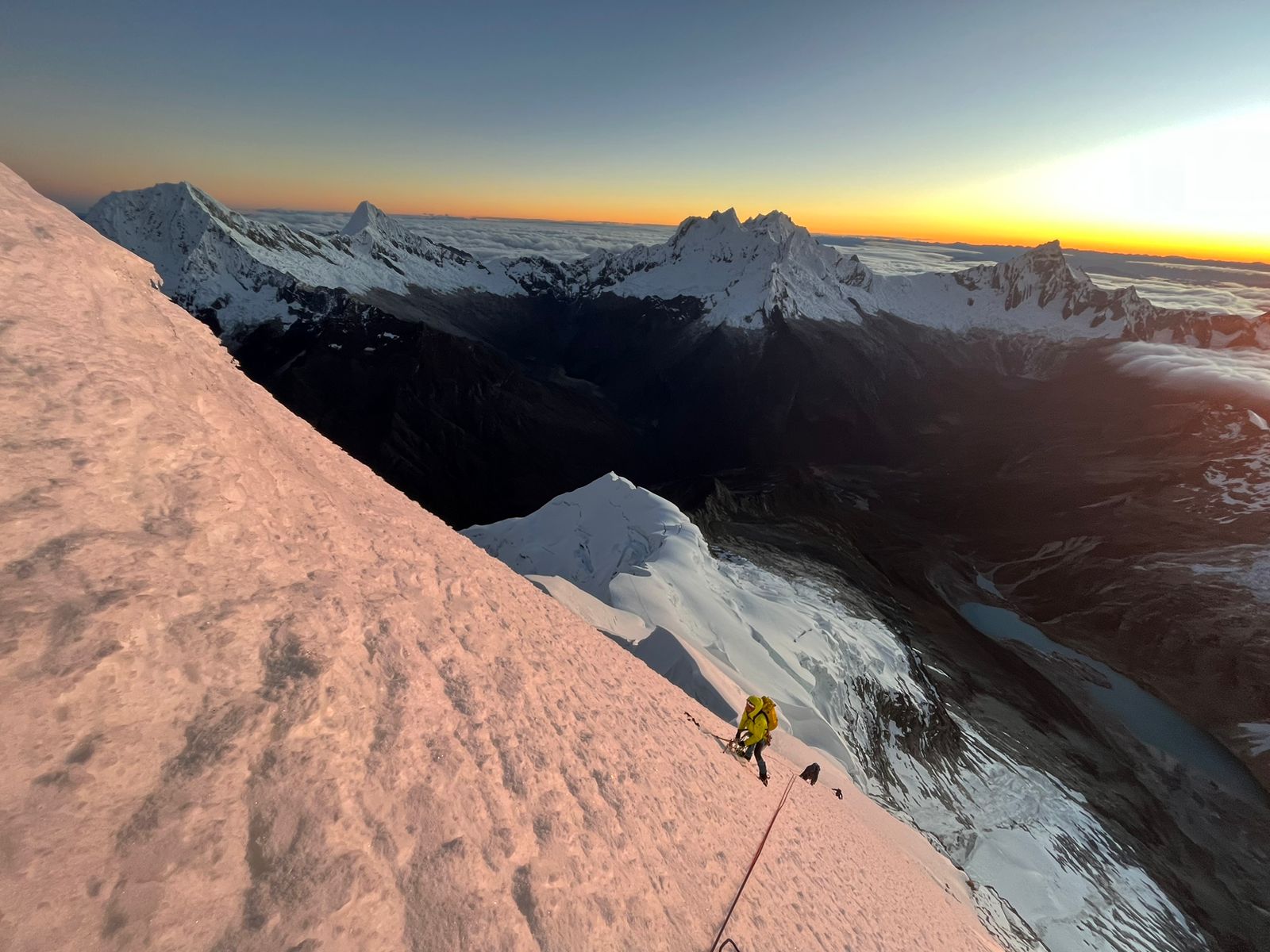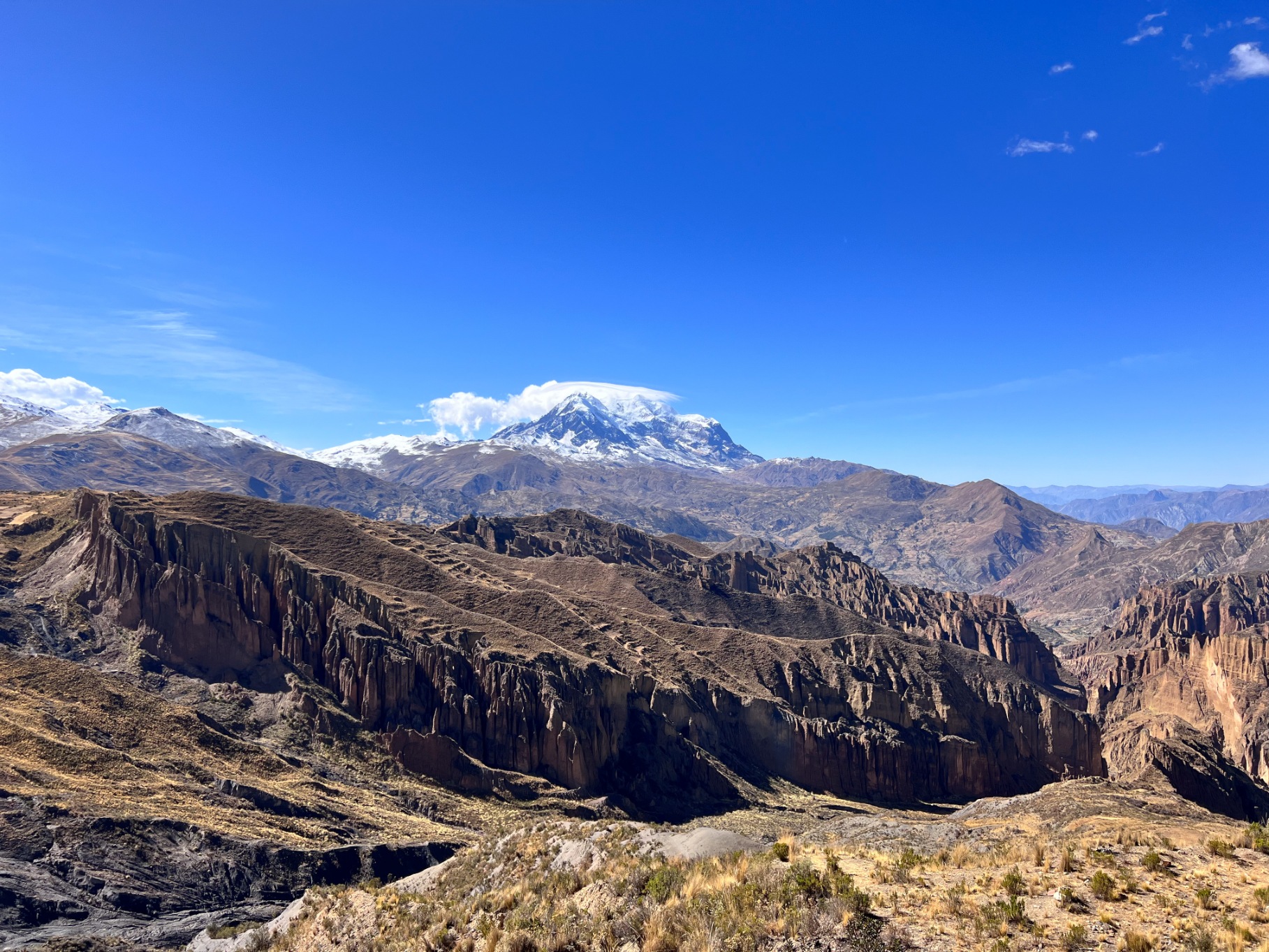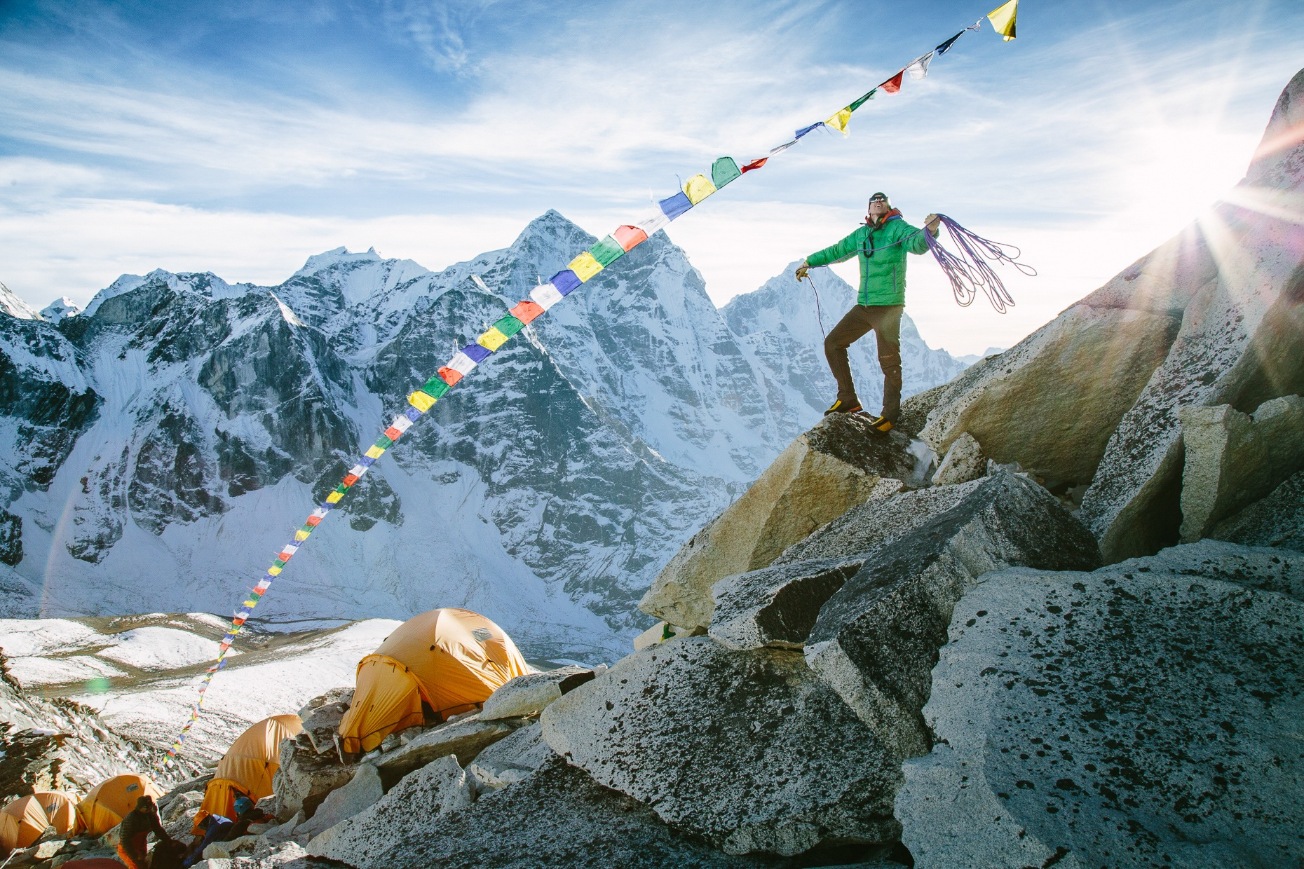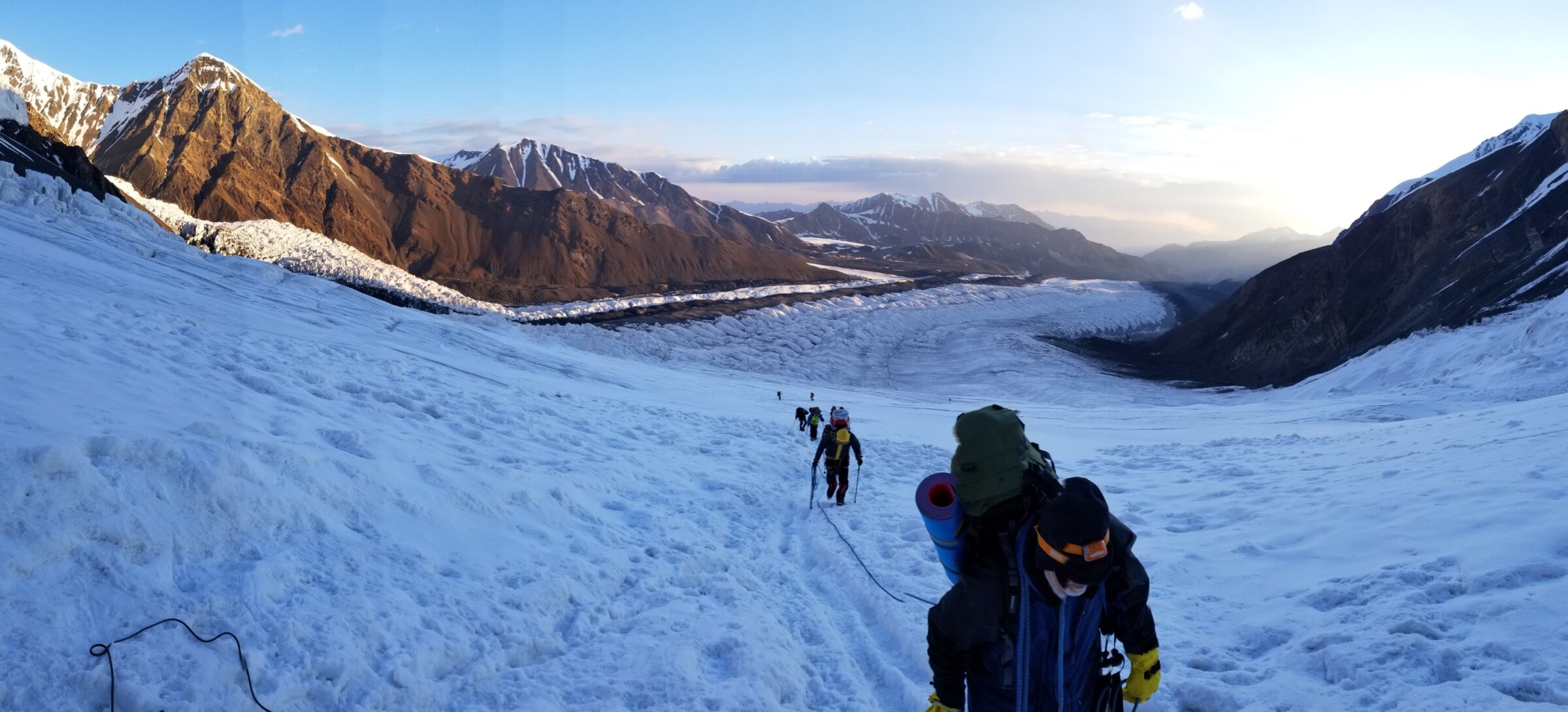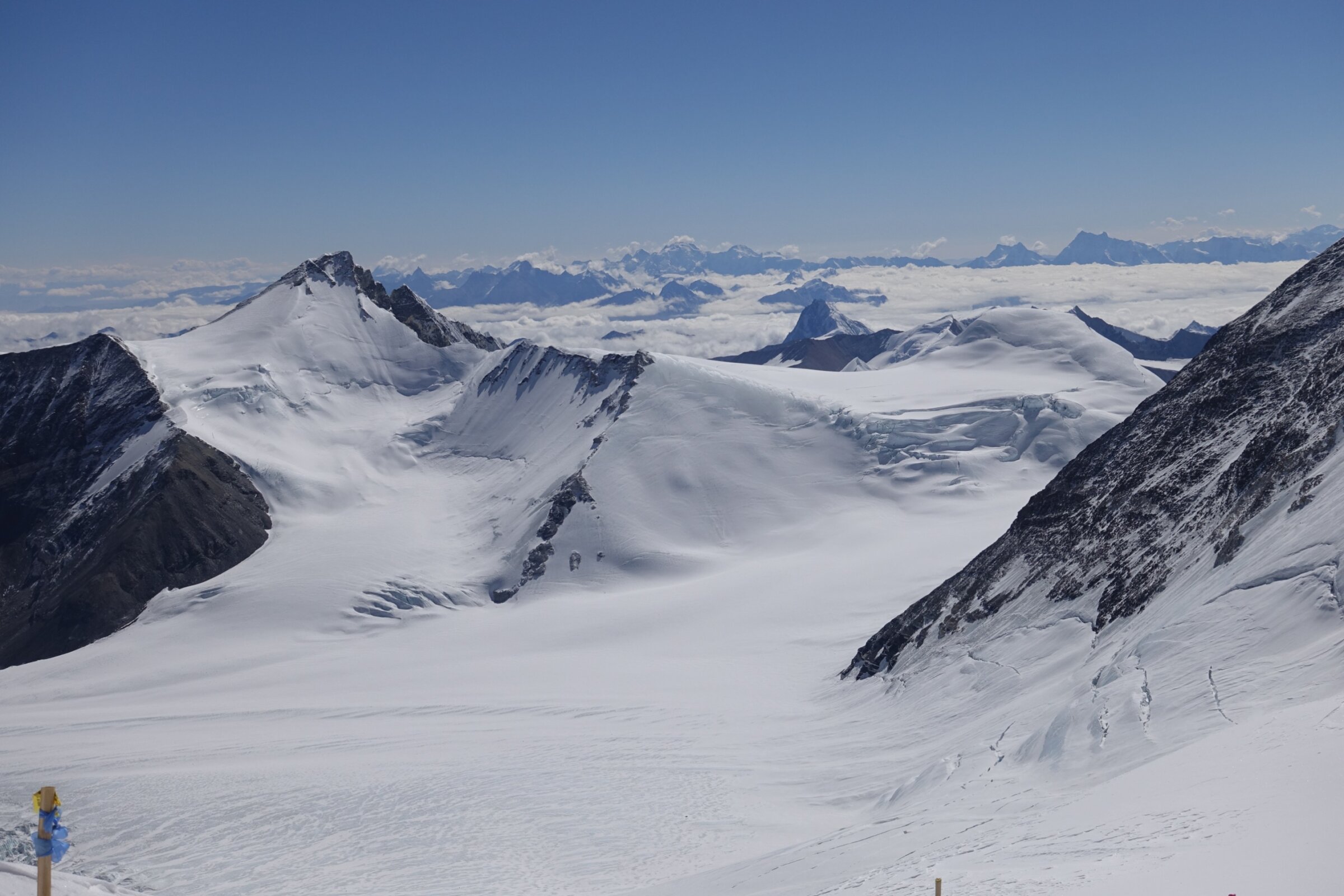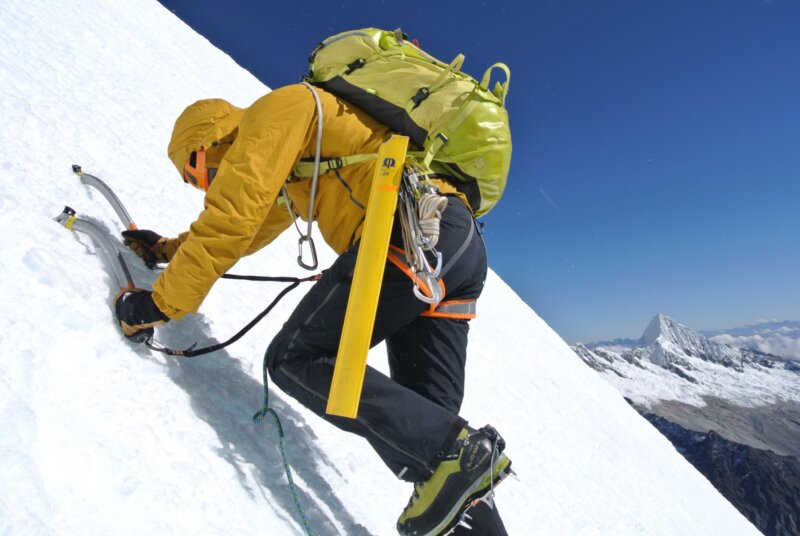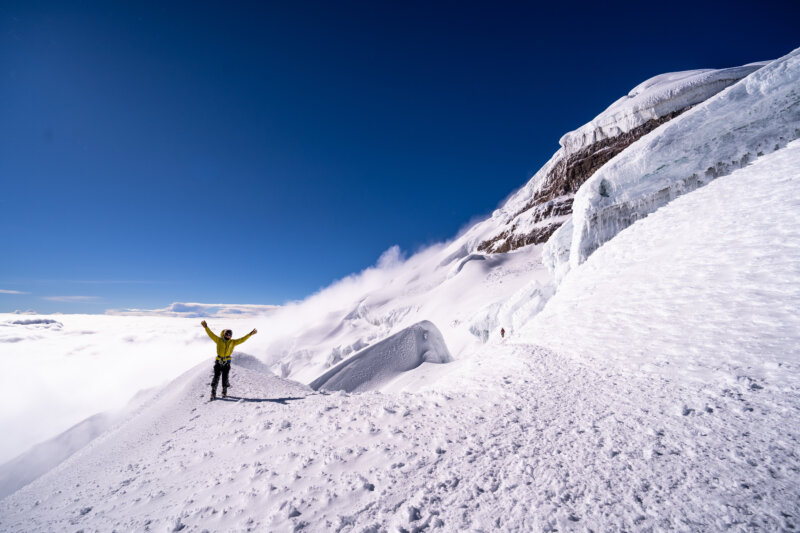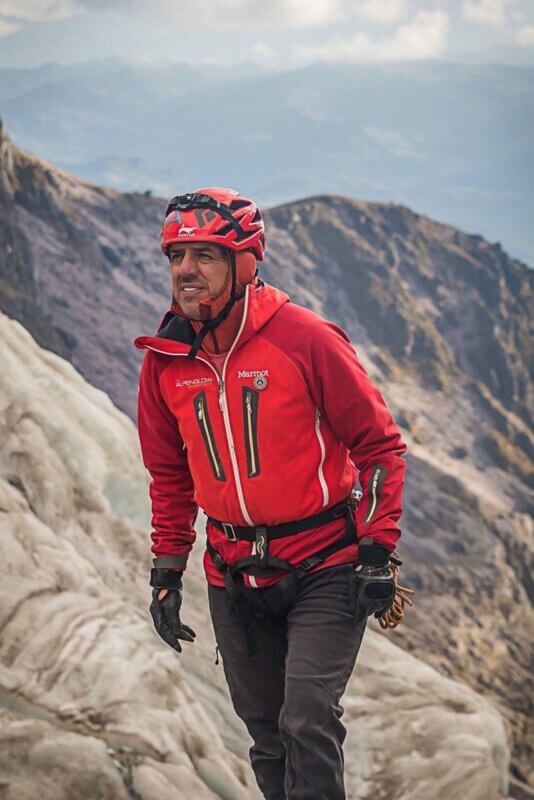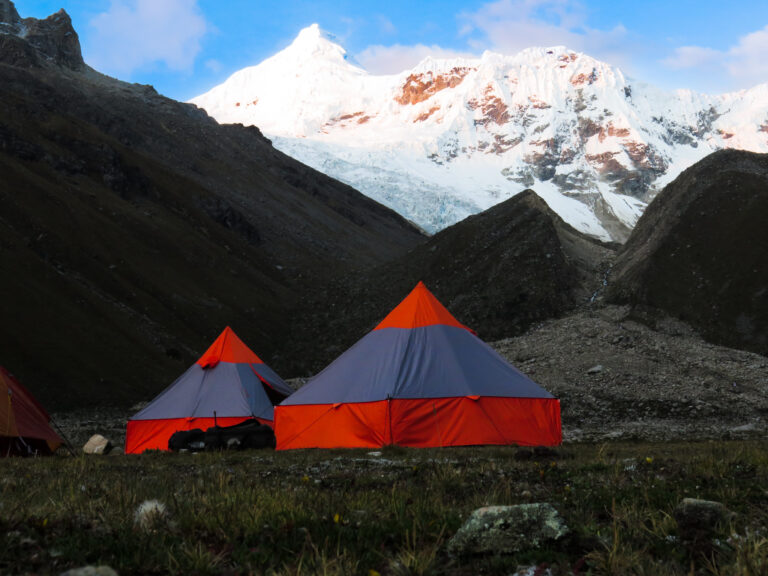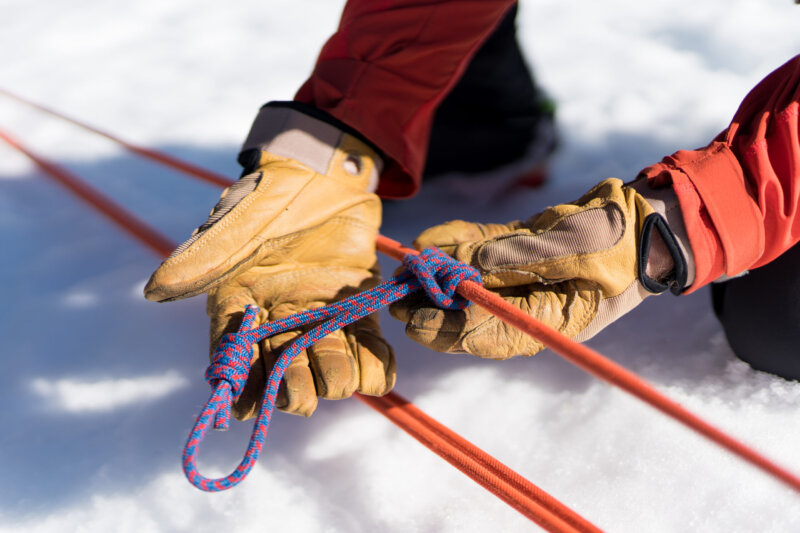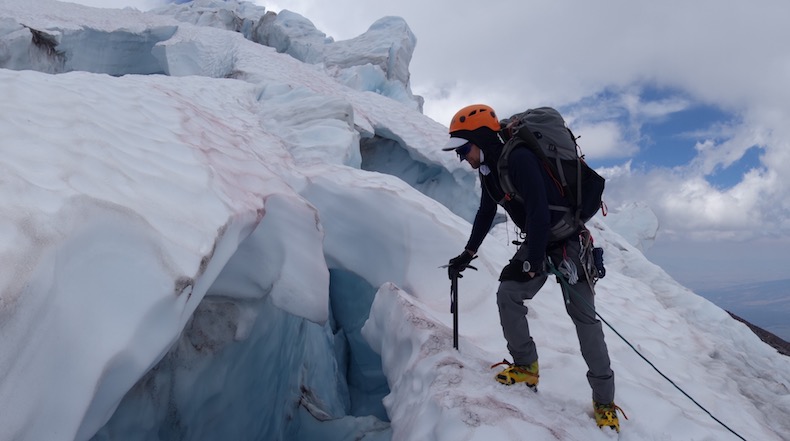From Nebraska to Peru: Griffin Mims on Alpamayo
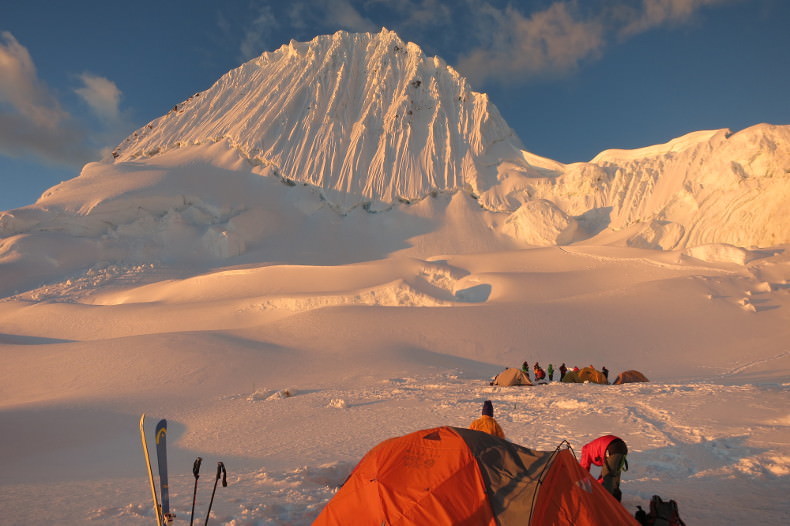
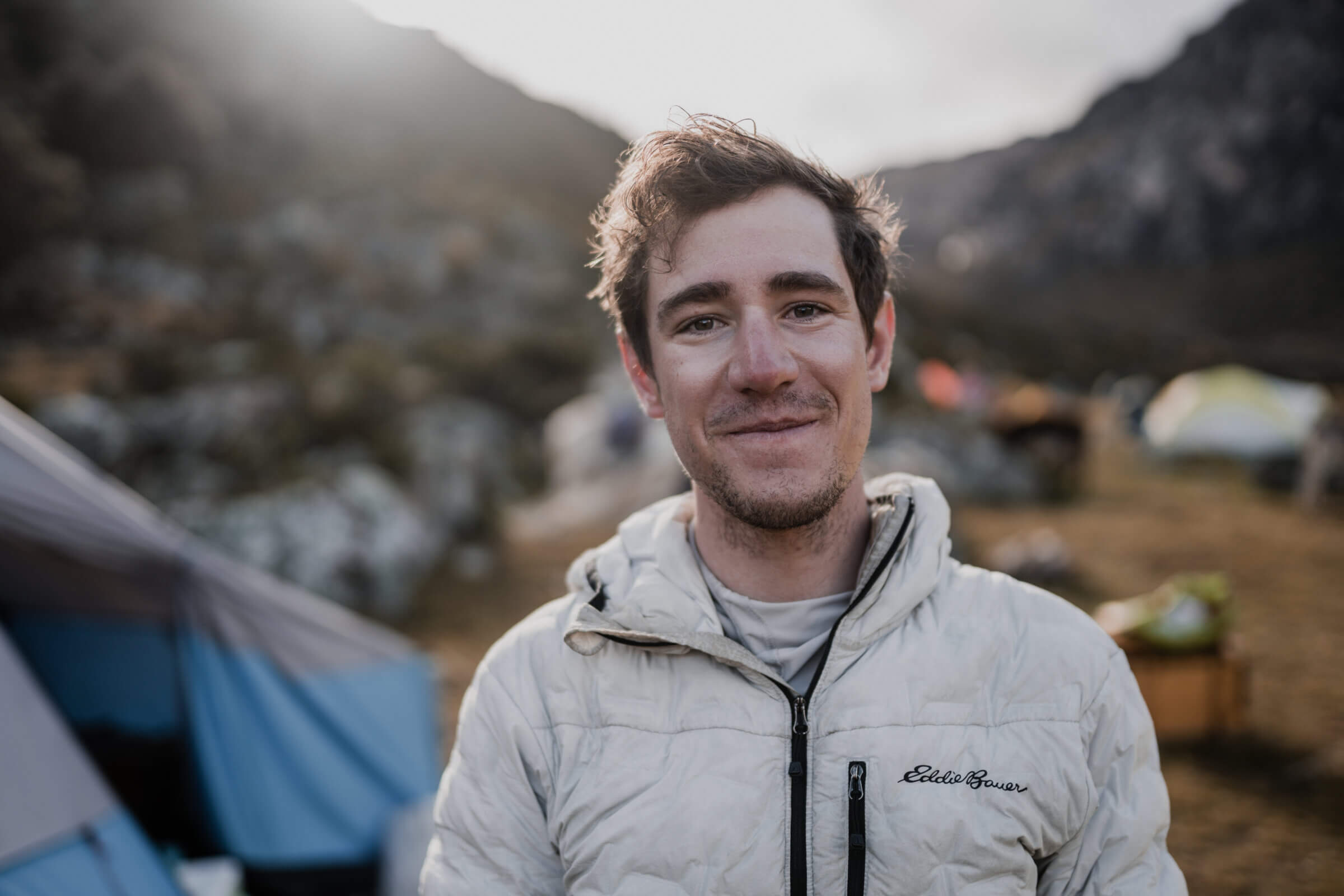
From Robert Kyte, Storyteller at Alpenglow Expeditions
This week, I spoke with Griffin Mims, Alpenglow’s International Coordinator and one I am grateful to call friend. As a fellow flatlander myself from the pine forests of North Louisiana, I admire, respect, and identify closely with Griffin’s journey from the cornfields of Nebraska to the summits of high peaks around the world. Neither of us grew up climbing, and so we share a unique sense of gratitude for big mountains and the journeys that have taken us there. I’m excited to share a piece of Griffin’s journey with you from his June 2023 expedition to Alpamayo in Peru, where he climbed a dream line to the summit of a dream peak.
RK: Give me a quick overview of your climbing history? Where and how did you start, what do you feel like was the first big climbing goal you achieved, and what have been some notable steps along the way to Alpamayo?
GM: I started climbing at a gym in my home state of Nebraska and immediately fell in love. Really, it consumed my life. I first saw a photo of Alpamayo in 2015 and knew I wanted to someday climb it. During my senior year of college, I spent a semester on a NOLS trip in Patagonia. While we were there, we climbed four glaciated peaks. It was my first time climbing anything proper, and I was hooked. Within a few days after graduating, I moved to Tahoe so I could live in the mountains. In 2018, I started ice climbing with the goal of getting good enough to be able to climb technical alpine routes around the world. In 2021, I went on our Cotopaxi Rapid Ascent expedition, and in 2023 I turned 25 at 25,000 feet on Makalu for AB’s [Adrian Ballinger] ski descent (Adrian made the first ever ski descent of the mountain). I’ve kept on rock and ice climbing since then, and this past June I finally got to put all this hard work to the test on Alpamayo.
RK: How did you prepare for this expedition? What paid off, and what would you have done differently?
GM: I trained heavily by running and getting as much vert per week as possible. Generally, I like to enter every expedition feeling as fit as I can, because the more you train, the more fun you have. During the winter before the trip, I tried to ice climb as often as possible.
In hindsight, I wish I’d done more calf raises. Turns out WI3 [Water Ice 3] is tough on the calves!

RK: The trek in is usually the time where you start to ask yourself the deeper questions about what you’re doing and how you got here. How was the trek for you? What thoughts and feelings do you remember most?
GM: I felt overwhelming gratitude and excitement trekking into the Cordillera Blanca. I’d dreamed of this range for years, and as I trekked further in the reality of where I was and what I was about to do really set in. I was super fired up to climb a hard, technical route on the most beautiful mountain on the planet.
As a kid who grew up in Nebraska working the corn fields every summer, it felt surreal to be trekking to to climb one of the most classic peaks in the Blanca. I felt very small underneath these big mountains. I felt grateful for the support of my family, friends, and Alpenglow for making this expedition possible. I felt nervous knowing this would be the most technical climb I’d ever done, especially at altitude. But mostly, I was so fired up that my head was spinning. You reach a point where the mixture of fear and excitement is all contained into focus and deep, labored breath. It’s so good.
RK: How did you feel when you first laid eyes on Alpamayo, ‘the most beautiful mountain in the world?’
GM: It was one of those moments that I’ll remember for the rest of my life. When you get into base camp, you look up to see the back side of the mountain. It’s beautiful, but it’s not the iconic face that you see in the photos. It takes two days to get up to the col where you finally see that fluted face. As I finished up the last pitch of climbing before Col Camp (18,000’/5486m) and dropped my heavy pack, I was laughing and cursing under my breath about how beautiful it was. After years of dreaming, there it was, right in front of me. It was beautiful and intimidating at the same time. Stoke was extremely high.

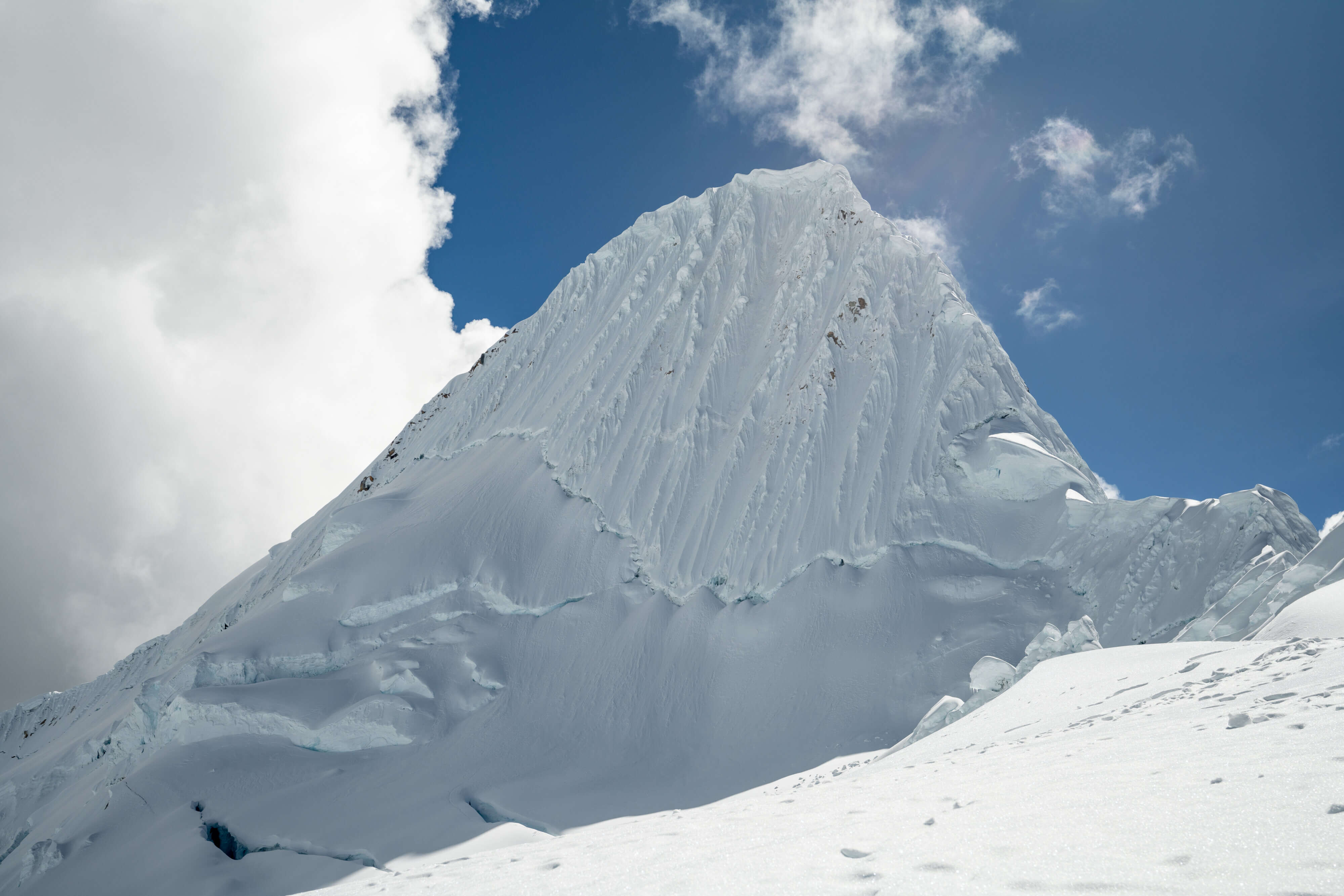
RK: What are some things about this expedition that stood out to you specifically as part of the Alpenglow experience?
GM: The guides and base camp services stood out to me the most. Our cook staff is amazing: we had fresh food made for us every day, including cheeseburgers at 18,000’ the night before our climb. Even though I work for Alpenglow, it still far exceeded my expectations.
The guides are truly some of the best on the planet. They led every pitch flawlessly, while simultaneously coaching and encouraging us along the way. It makes a massive difference having a guide who’s equally as stoked to be climbing as you are, and who is doubly competent. I worried for nothing, just getting to enjoy the climb, the movement, the exposure, and the experience.
RK: Tell me about the climb itself. What felt natural, and what surprised you?
GM: The climb was hard! I was surprised at how much effort it required. It’s so different from just walking up to 19,000’. Each swing of the ice tool, every kick into the ice, you’re just using more and more of your body and your energy. It was legit hard, but so much fun. The climbing was perfect WI3/4, and the exposure was unbelievable. You turn around and see the valley drop down 6,000’ beneath you, with Quitaraju and Artesonraju looming in the background. The movement was familiar from the training I’d done, and I pretty quickly fell into a rhythm: stick the left tool, step up three times, stick the right tool, step up, repeat. It was amazing, and I felt so lucky to be climbing perfect ice in such a wild setting.
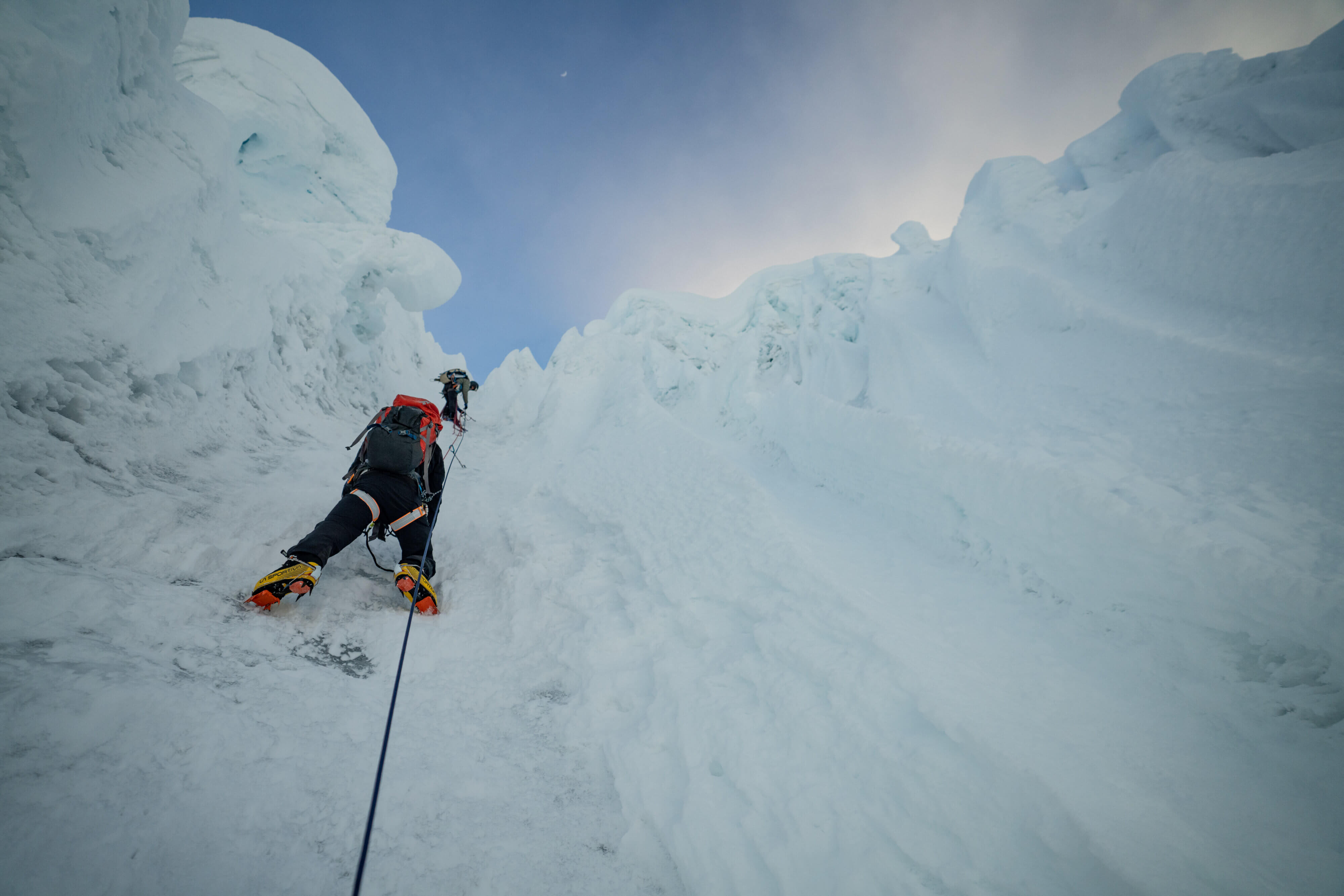
RK: What did reaching the summit of Alpamayo mean to you?
GM: Reaching the true summit of Alpamayo was nothing short of amazing. It doesn’t always happen every season, and we got really lucky with solid conditions. The final traverse to the summit is over a knife-edge ridge, some of the most exposed climbing I’d ever done. We reached the summit just after sunrise, and the light was spectacular across the Cordillera Blanca. We saw Huascaran, the tallest mountain in Peru, in the distance, with Artesonraju and Quitaraju right in front of us, and the full expanse of the Blanca beneath us.
I felt grateful to be standing where I was and proud of how far I’d come. I created this dream from the library at the University of Nebraska, studying mountains instead of marketing. Now, i was standing on the summit of a dream mountain, having climbed a dream line. I was super psyched, proud, tired, but still focused, because 10 or so rappels remained between us and the ground. Still, it was an amazing feeling.

